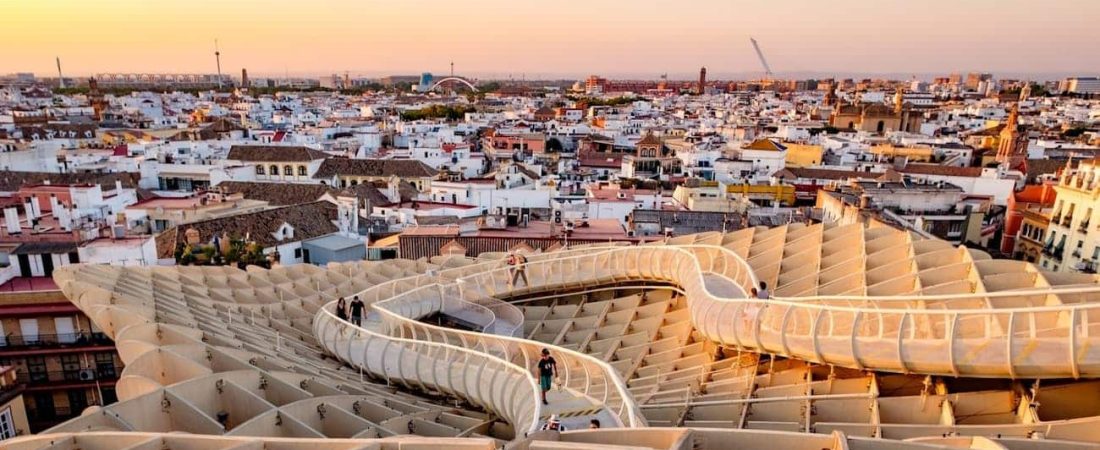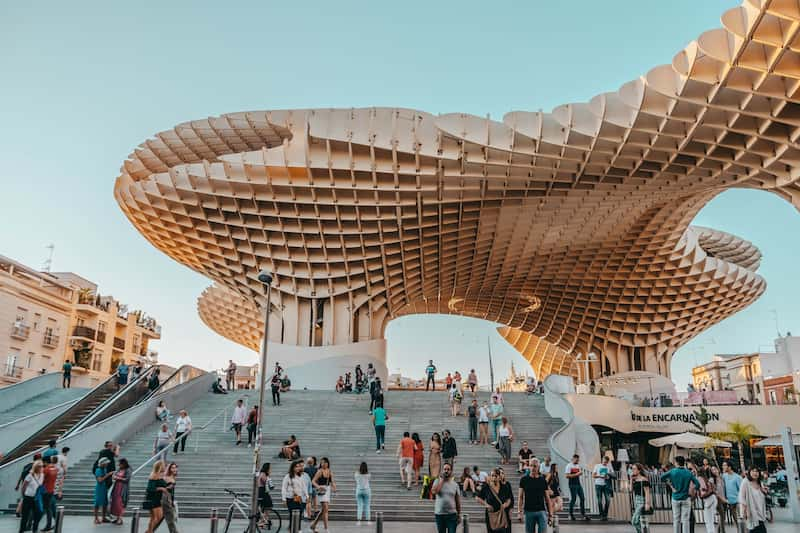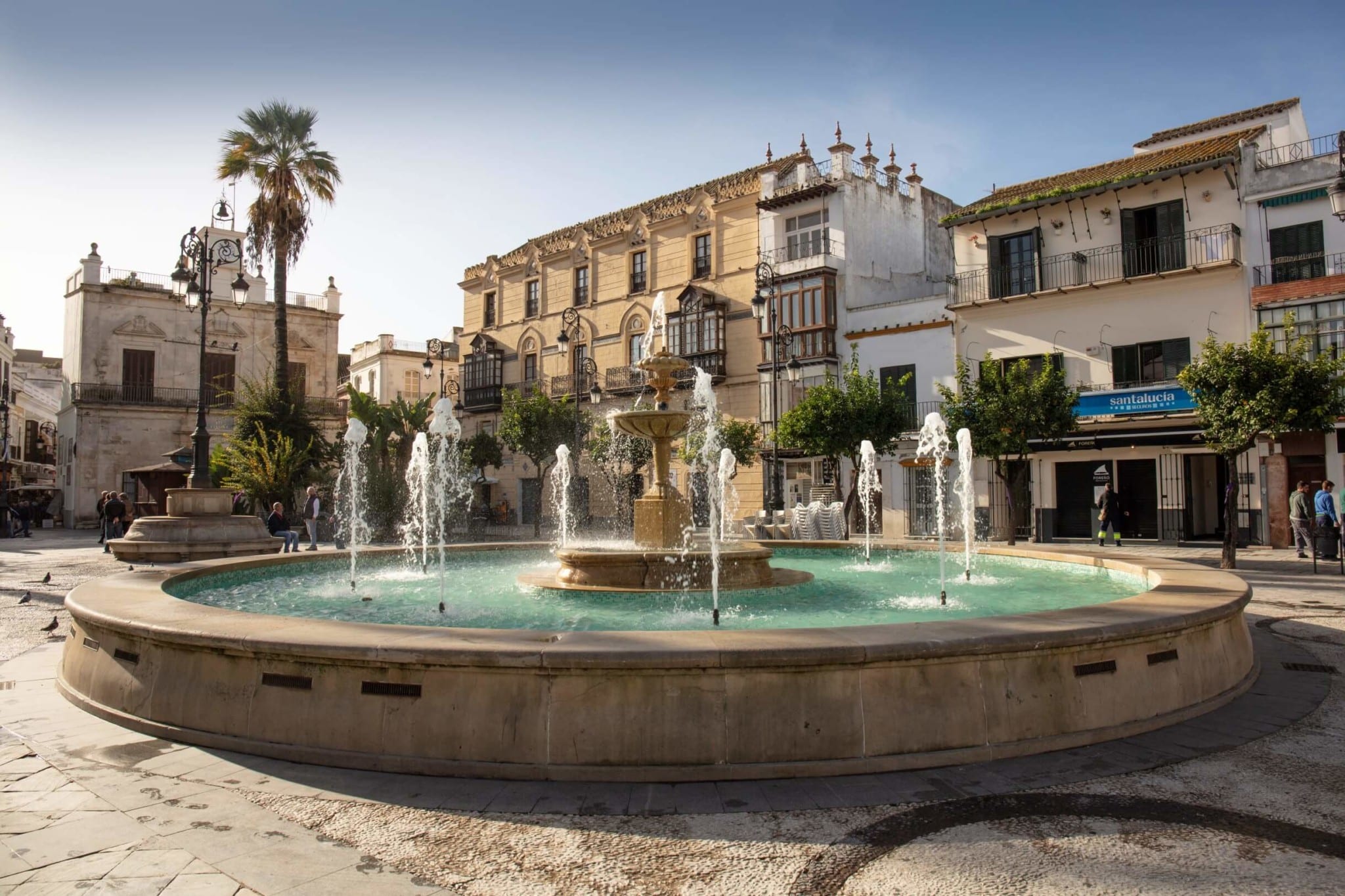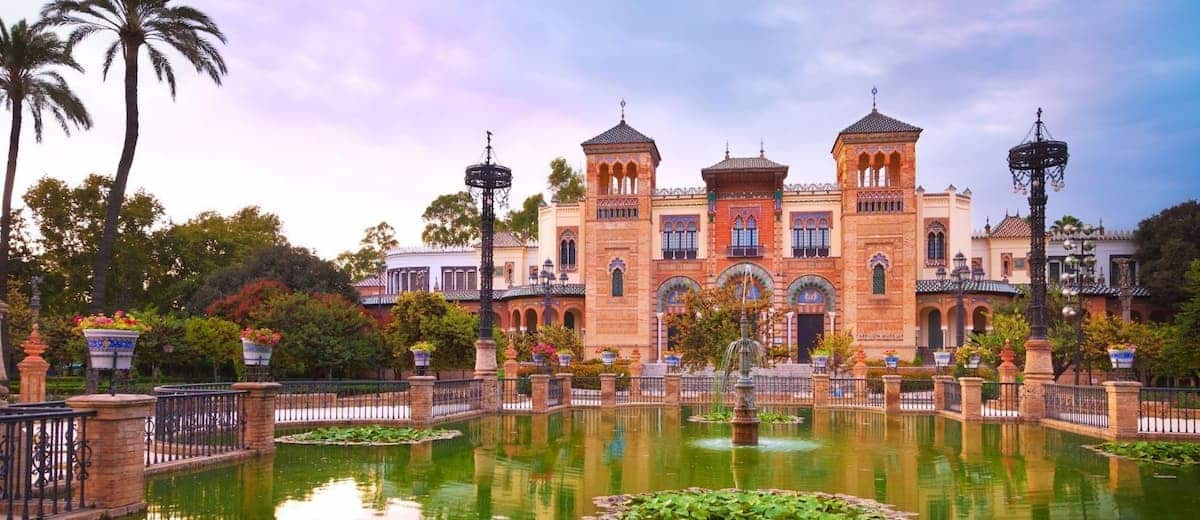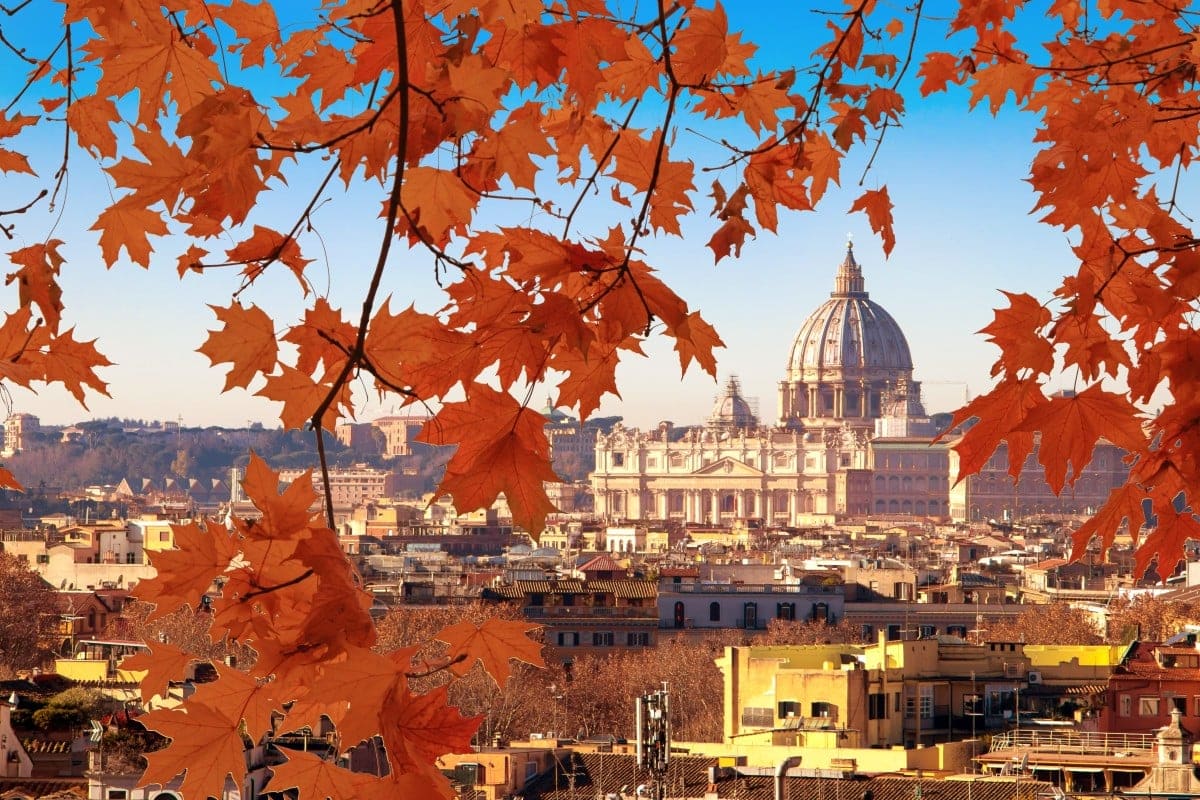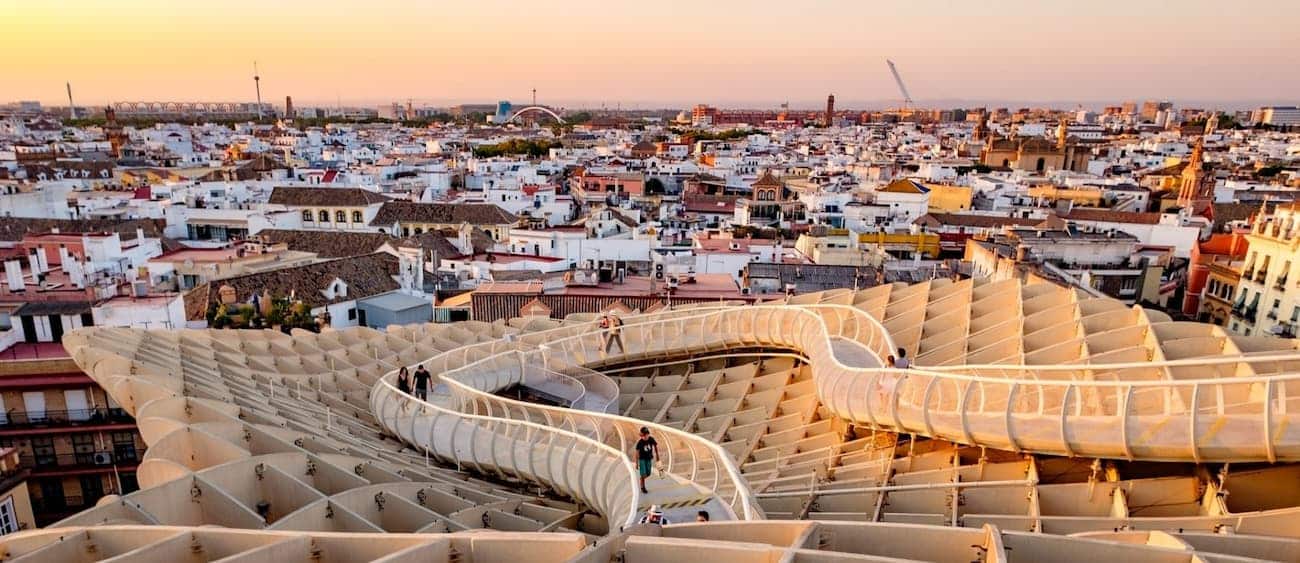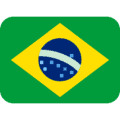The Mushrooms of Seville, also known as Mushrooms of the Encarnación or “Metropol Parasol” is one of the most emblematic sites in the entire city. Their location, their size, their structure, their shape, everything about them is an invitation to observe and visit them as soon as you look at them, and the reality is that it is not a difficult task because As long as they appear in the field of vision, it is practically impossible not to observe them.
The existence of a place like Las Setas is undoubtedly something amazing but not difficult to imagine in a city like Sevilla. We are talking about a town that has places that are part of the list of World Heritage Sites according to UNESCO, others that are completely outdoors, others that are still as important today as they were throughout history. . In addition to that, it has been the setting for more than one movie, it has the largest old town in the entire peninsula and the oldest iron bridge. Is Seville the city that has it all? It would seem almost so.
Along with the Mushrooms of Seville, the Plaza de España, the Real Alcázar and the Parque de María Luisa also stand out, all places that are worth visiting at least once, but in this particular case we will only focus on this wooden structure and concrete that for several years has been the protagonist of the Plaza de la Encarnación.
With dimensions of 150 meters long, 70 meters wide and an approximate height of 26 meters, the Mushrooms of Seville house at its base a traditional market, a square for shows, an archaeological museum, while in the upper part there is a terrace and a viewpoint with a view that allows you to observe the old town from a different point of view.
The history of the Mushrooms of Seville
The origins of the Setas de Sevilla date back to long before its existence as we know it today. In fact,already in the 19th century, Plaza de la Encarnación had an important marketwhich was known by the name of the square. In fact, it was the first food market that the city had, or at least the first on record. It had more than 400 stalls and was in charge of supplying the entire city.
Even from its origins, and even without the striking structure that characterizes it today, this space became not only a place to shop but also a meeting point for locals.
Almost two centuries after its inception, the Mercado de la Encarnación was demolished in 1973 because it was intended to reform the streets and coincided with the location of some stalls, and also because the appearance of the first supermarkets. Faced with this another place was sought so that the stallholders could have their stalls for commercial purposes, with the aim of making it a place of passage, somewhat provisional, but they remained there for 37 years.
In the year 2004, some time later than originally thought, the City Council held a competition that was carried out at an international level to return to urbanize the Plaza de la Encarnación. The purpose of it was to bring life and grandeur back to the Plaza de la Encarnación, as it had been so many years ago, and of course also provide a new space for merchants who had been displaced.
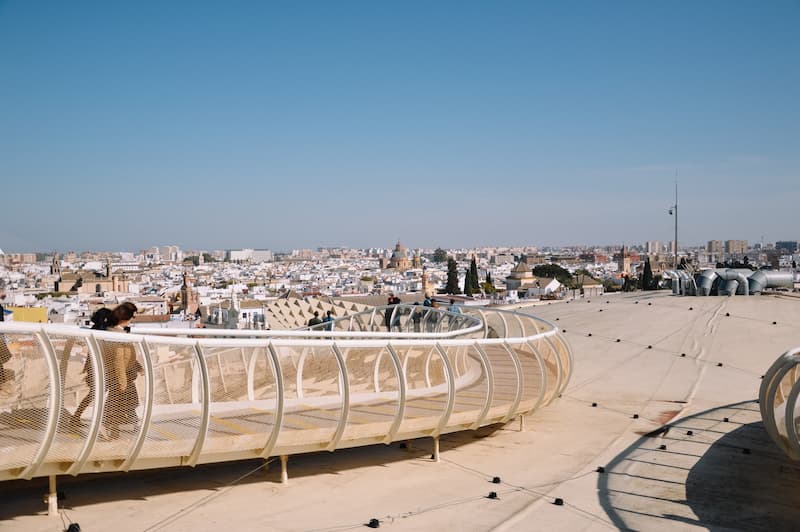
There were 65 proposals that were submitted to return the splendor to one of the most characteristic squares of the city, and it was Jürgen Mayer’s design that was chosen to create the Mushrooms of Seville. It is inspired by the Plaza de San Pedro and the Vaults of the Cathedral of Seville. What distinguished it above the others was that it was not only designed to return the market to the city, but that seeing it made one think of everything characteristic of the city and would once again place the Plaza de la Encarnación as a meeting place.
The construction of the Mushrooms
The construction of Las Setas de Sevilla began on March 6, 2006, the work that would resignify one of the most important squares and that would become one of the most characteristic of de the city presented its own challenges. On the one hand there was its enormous size and on the other hand the materials with which it would be made.
The Mushrooms of Seville measure 150 x 70 meters, with an approximate height of 28.5 meters. To achieve this structure, 3,500 pieces, joined together by almost 3,000 knots and 16 million screws and nuts. When the project began, without a doubt, it sought to be one of the most important spaces in the city, but not at any cost, rather it intended to do it in a way that is respectful of the environment and it succeeded. .
Although the structure was made with pine wood, for each one that was felled, another three were planted in the same forest of origin. In fact, the architect Mayer received recognition in 2012 in the category “Sustainable Construction” of the Reddot Award.

The Mushrooms of Seville stand out in the city, of course, but also in Spain in general and in the world. In fact, they constitute the largest wooden structure in the entire world, with some 3,500 cubic meters of surface.
The Mushrooms of Seville open their doors to the world
The official and complete inauguration of the Setas de Sevilla was on May 6, 2011 with the return of the Mercado de la Encarnación, which was in operation since December 2011, the opening of the Plaza Mayor and the Antiquarium, since February 2011, and the walkways and the Mirador.
Initially its name was going to be “Metropol Parasol”, but quickly those who visited it began to refer to it as “Las Setas” because of the shape of its structure and that name practically became the official one.
Incarnation Market
The Mercado de la Encarnación, also known today as the Mercado de las Setas, is the first on record, so it could be one of the oldest in the entire region. city and, today, is one of the most modern. There you can find around 40 stalls where those who visit Setas de Sevilla can buy all kinds of food and try the gastronomy typical of this town.
The market is located on the largest exhibition area of the Antiquarium and is considered “the best fruit market” in all of Spain. This market is open to the public from Monday to Saturday, from 8 in the morning to 3 in the afternoon, while on Sundays it is closed.
Antiquarium
The Antiquarium is an archaeological museum that is located in the underground of Las Setas de Sevilla and opened its doors to the public on March 27, 2011. It is here where the largest archaeological site in the entire city is found, with remains dating back to the 1st century.
This space was found in the 1990s, while the construction of an underground parking lot and the subsequent remodeling of the plaza were being evaluated. Among the elements that stand out within this space are the mosaics of the Roman House, the House of the Ninfa and the House of Bacchus, and a mural in the Ocean Courtyard that is three meters in size.
This Seville Mushroom Museum can be visited from Tuesday to Saturday from 10 a.m. to 8 p.m., while on Sundays it closes at 2 p.m. and on Mondays it does not open.
The Lookout
The Setas de Sevilla viewpoint is one of the most incredible panoramic points in the entire city.From there you can see a 360° view of the old town,allowing you to witness the city landscape from a different point and a height of 28 meters. Those who wish to go up can walk a 250-meter walkway that has its own gastrobar, where they can drink and eat something while enjoying the day.
In order to access this part of the Mushrooms, you can buy the ticket online through the official page de las Setas de Sevilla, taking into account that the value increases a little half an hour before sunset. For its part, all people who reside or were born in Seville will be able to enter for free.
Visit the Mushrooms of Seville
Without a doubt, a walk through the Mushrooms of Seville is an activity that cannot be missed on your next tour of this city in Spain. They are located in the Plaza de la Encarnación, one of the most important in the city, which also helps to make getting there accessible from different points.
One of the ways to get to this place so characteristic of the city of Seville is by train, starting from Sevilla Santa Justa, and from there it is about twenty minute walk. For their part, those who choose to arrive by bus will have two options, bearing in mind that the destination is Calle Laraña. One of the options is line 27 while the other is line 32, both leave you at a distance of one minute on foot.
On the other hand, for those who arrive from other places and are at the Airport, from there the distance to Las Setas de Sevilla is 25 minutes by car, about.
Those who intend to go up to the viewpoint must bear in mind that it is necessary to buy the ticket that can be purchasedthrough the internet or at the ticket office that It is located next to the access to Antiquarium. Taking this into account, visiting hours from November to March are from Monday to Sunday, from 9:30 a.m. to 12:00 a.m., while in the months between April and October that timetable extends half an hour more at night
Among the available ticket options are the Immersive Experience, which can be done during the day or at night, and the visit to the viewpoint which also has both options .
With all this information, the only thing left is to get to Seville and get ready to enjoy one of its most amazing places.
